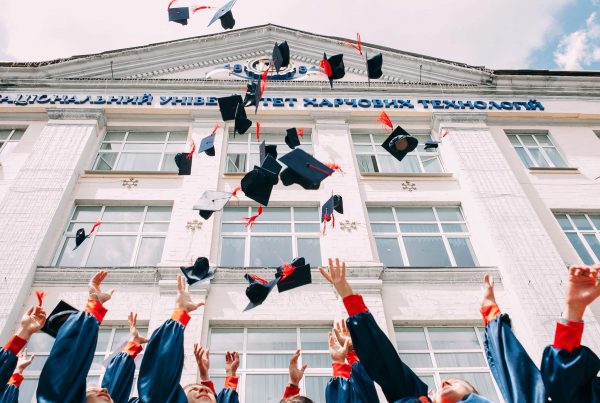
Chapter 1
Overview
Australia is one of the top study-abroad destinations in the world for higher education, with over 8 of its universities listed in the QS Rankings for Top 100 universities in the world. With vibrant cities, diverse geography, world-class education, a plethora subjects to pursue, and job opportunities under the economy, Australia is one of the best countries to study and live in. Student VISAs are the keys to unlocking this trove of potential in Australia. In this article, we will be exploring Student VISAs in Australia in detail. Let’s dive in!
Student VISAs in Australia
Student VISAs in Australia are similar in nature and process to Student VISAs in countries such as the UK, USA, and Canada. In order for students to study a program or pursue a degree in an Australian Educational Institution such as a university, you will need to apply for a Student VISA and get it approved. Quite naturally, you will also need to meet the eligibility requirements of the program that you are pursuing as well, which may involve writing standardized tests, SOPs, and filling out university applications.
While it is true that the type of VISA that you require depends on the type of degree you’re pursuing and the duration of your stay in Australia, it is also true that the Subclass 500 Student VISA is the most common Student VISA in Australia applied for by international students regardless of their specialization or field of study.
The Subclass 500 Student VISA
The Subclass 500 Student VISA was put into effect by the Australian Government from July 1, 2016. Some of the guidelines issued in July 2016 have changed and a Simplified Student VISA Framework (SSVF) has been implemented. To put it simply, SSVF makes it required for all international students to apply for the Subclass 500 VISA, thereby combining subclasses 571-576 into one. However, the core features of the Student VISA remain unchanged. Let us look at the scope of this VISA and what it allows the holder to do:
- It allows the holder to stay in Australia for up to 5 years, which is inclusive of the duration of most study programs.
- Most significantly, the VISA allows the holder to apply for programs in educational institutions and pursue degrees in Australian Universities. It wouldn’t be a Student VISA otherwise would it? : P
- It allows the holder to travel anywhere within Australia, and to and from Australia as well. Additionally, the VISA also allows the holder to bring their family members to Australia.
You can read more about the Subclass 500 Student VISA here. For now, all you need to know is the aforementioned information, and the fact that the Subclass 500 Student VISA is the one you need to apply for.
COVID-19, its effects on Student VISAs in Australia, and Important Updates
Australia has handled the pandemic quite well, since the beginning of March 2020. The Australian Government had announced earlier (in 2021), that the country will once again welcome international students from 1 December 2021, in order to support their education sector, and provide their economy with skilled workers. Given the emergence of the Omicron Variant of COVID-19, the government may decide to take pre-emptive measures to curb the spread of this variant, and may impose strict regulations on travelers.
For now, all vaccinated (both doses) VISA holders, inclusive of international students, are allowed to travel to the country. They will be required to present their vaccination certificates as proof of their vaccination status, and also present a -ve COVID-19 PCR Test Report dated 3 days before their scheduled departure. Good news for Indian Students – Both Covaxin and Covishield were declared as approved vaccines by the Australian Health Ministry.
Note: Students will need to adhere to the regulations imposed upon them and strictly follow quarantine rules upon their arrival. Those applying for their Student VISAs in Australia for the next academic year will also need to be fully vaccinated and comply with the VISA requirements of the country.
Intakes in Australia
Australian Universities’ application processes for their programs are split into 2 main intakes every year:
- 1st Intake – From February/March to May/June
- 2nd Intake – From July/August to November
It is important to be prepared for whichever intake you choose to go through for your chosen program. Most Indian students prefer to go through the first intake. Here’s a useful table that lists the most popular programs in Australia and the best Universities in Australia for these programs.
Chapter 2
Requirements for Student VISAs in Australia
In this section, we will be exploring the details of the requirements that a student needs to meet before filling up their VISA application. These details include documents, academic requirements, and background checks.
Documents required for Student VISAs in Australia
- A valid Passport
- Proof of admission or enrolment into a university shown in the form of the Electronic Confirmation of Enrolment
- Passport-sized Photographs
- Academic Documents and Proof of Projects worked on
- Proof of Work Experience (if relevant)
- Statement of Purpose and Letters of Recommendation
- VISA Application Fee
- Genuine Temporary Entrant (GTE) Statement
- Details of your Overseas Student Health Cover (OSHC) health insurance policy
- Proof of financial stability and ability to pay tuition fees, cover cost of living and cost of returning to the home country.
Other Requirements to meet before filling up your Student VISA Application in Australia
- All the aforementioned documents in the previous section – These are crucial so do scroll back up and peruse the list of documents once again.
- Australia Study Requirements – In order to be eligible to apply for a Student VISA, you will need to be enrolled in a full-time course (UG, Master’s or PhD). The course needs to be registered under the Commonwealth Register of Institutions and Courses for Overseas Students, and the Australian University where you’re going to study needs to provide you with an Electronic Certificate of Enrolment (eCoE) as proof of study. This is one of the most important criteria to meet for a Subclass 500 Student VISA in Australia.
- English Language Requirements – The primary language of communication in Australia is English. You will need to provide proof of English proficiency to the VISA authorities due to this reason. Proficiency in the English language shows that you will be able to communicate effectively, keep up with the coursework taught, and thrive in Australia (less chances of linguistic barriers). Proofs of proficiency come in the form of standardized test scores. The following standardized test scores are acceptable:
- IELTS: 5.5/6 (IELTS Complete Guide)
- TOEFL: 50
- PTE: 42
- Certificate of Advanced English: 162
- Health Insurance and Health Requirements – You will need to get Medical Clearance Certificate indicating that you are in good health and you will also need to purchase an OSHC insurance policy so that you are able to cover your healthcare bills in case of medical emergencies.
- Character Requirements and Background Checks – The authorities will check for previous criminal records or affiliations to any organization linked to terrorism.
If any other documents are required or any other prerequisites need to be met, the university will notify you about the same.
Chapter 3
Applying for Student VISAs in Australia
According to the aforementioned Simplifies Student VISA Framework (SSVF), all VISA applications must be initiated and completed online. Also, keep all the necessary documents ready before proceeding with your application.
- Create your Student VISA profile on the Australian Immigration Website.
- Apply for the Subclass 500 Student VISA and fill in the required details. You will also need to upload scanned copies of some of the documents we mentioned beforehand. Note that you can apply for your Student VISA a maximum of 124 days prior to the commencement of your course.
- Pay the VISA application fees after filling in your application and uploading the necessary documents.
- Upon completion of all these steps, you will receive a Transaction Reference Number (TRN). Your TRN will allow you to check the status of your Student VISA Application.
- Await confirmation! All the best! 😀
Cost of Student VISA Application in Australia
The cost of applying for the Subclass Student VISA is AUD 1100 or ~INR 59,000 for students above 18 years of age.
Chapter 4
Student VISAs in Australia and Work Options
In this section, we will be covering the part-time options that the Subclass 500 VISA provides for; we will also be covering the post-study work options for international students, along with the accompanying subclass VISA 485.
Part-Time Work Options that Student VISAs in Australia provide
The Subclass 500 Student VISA allows international students to work for up to 40 hours in a fortnight (2 weeks) during the course of the semester. During semester breaks, students can work for an unlimited number of hours. A point to note: you will need to wait until your course begins in order to start working at your part-time job. Here are some of the part-time work options for international students in Australia and their respective salaries per hour.
Post-study Work Options
Temporary Graduate Work Stream: Upon completion of your degree (either UG, Master’s or PhD), you will be eligible for the aforementioned subclass 485 VISA, which is the Temporary Graduate Post-Study Work Stream for students. This allows the VISA holder to work and live in Australia for 2-4 years depending on their course and their qualifications.
Graduate Work Stream: Students with excellent academics and relevant qualifications & skills that relate to a particular specialization or subject are allowed to work in Australia for a period of 2.5 years. The aforementioned skills and qualifications can be found under the Medium- and Long-Term Strategic Skills List (MLTSSL).
Students aiming for Permanent Residence can refer to Galvanize’s guide on the topic. We hope this article helped illuminate the processes and options related to Student VISAs in Australia. Cheers and Best Wishes for your endeavours!
Written by Saahil R Bhatt.
Galvanize Global Education.










